What Are The Key Factors That Influence Coffee Machine Performance?
Coffee machine performance troubles can devastate your business reputation and bottom line. Inconsistent shots, frequent breakdowns, and rising maintenance costs plague many coffee businesses, but understanding the root causes is the first step toward solutions.
Water quality, regular maintenance, temperature stability, component integrity, machine assembly quality, and grinder performance are the primary factors affecting coffee machine performance. Environmental conditions and electrical stability also play significant roles in ensuring consistent operation and extending equipment lifespan.
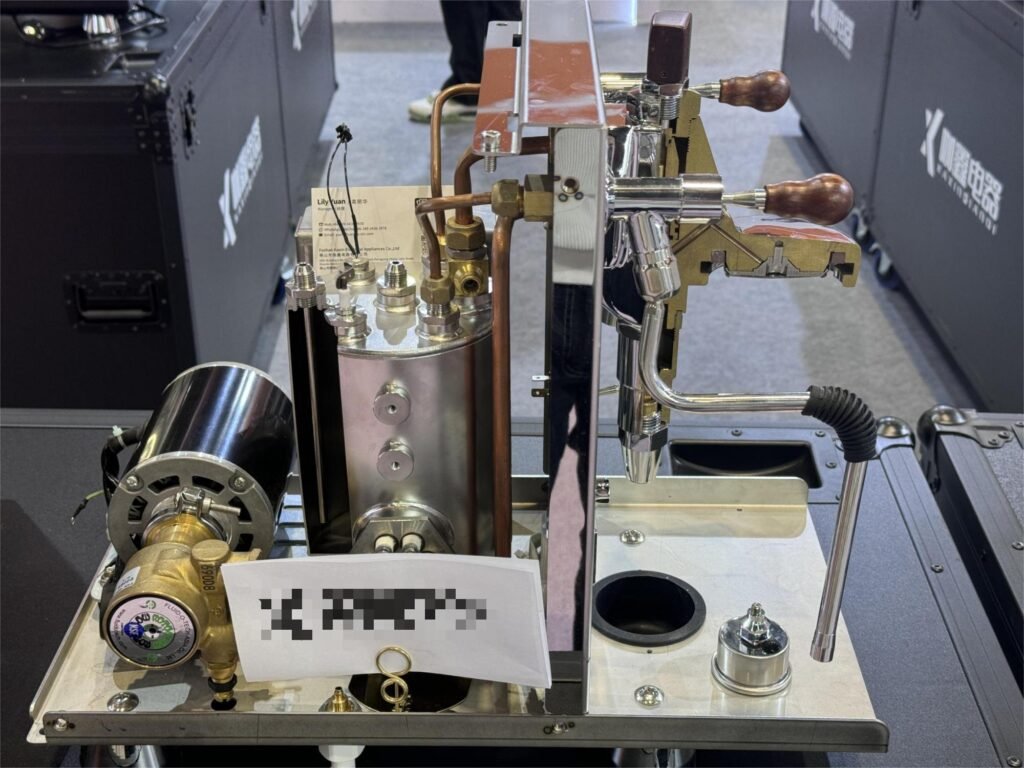
These factors don't operate in isolation—they form an interconnected system where one weak link can compromise your entire operation. Let's examine each factor in detail to help you maintain peak performance and protect your investment.
How Does Water Quality Affect Your Coffee Machine's Lifespan?
The silent killer of coffee machines lurks in your water supply. Hard water creates mineral buildup that gradually chokes internal pathways, reduces heating efficiency, and eventually leads to expensive component failures.
Water quality significantly impacts coffee machine longevity because minerals in hard water create scale buildup in boilers, pipes, and valves. This scale acts as an insulator, reducing heating efficiency by up to 30%, restricting water flow, and eventually causing component failure if not properly managed.
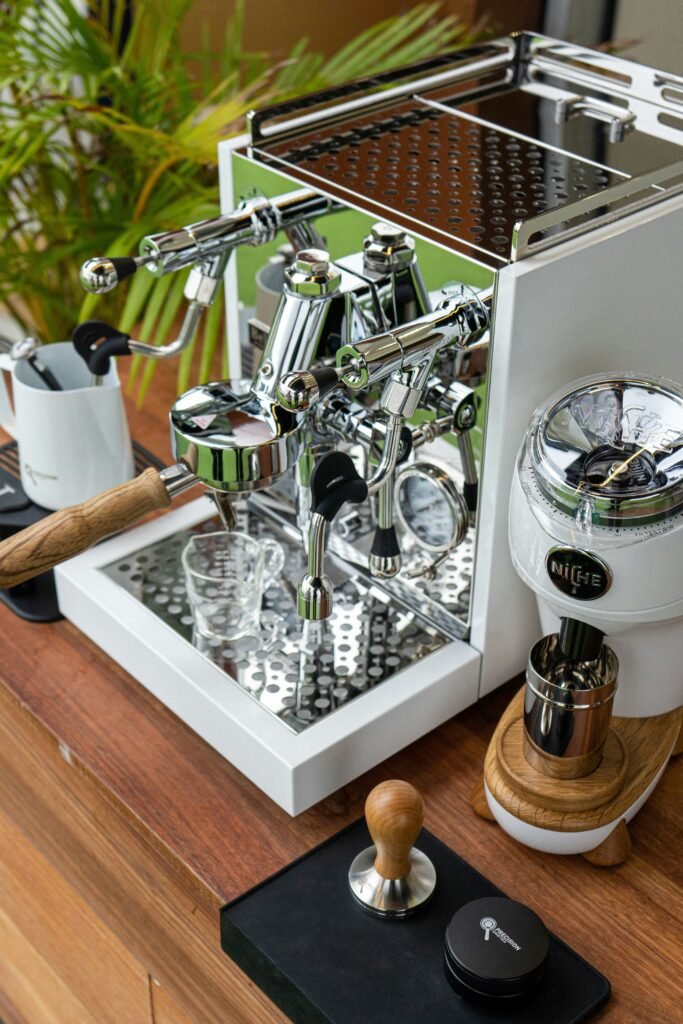
Understanding Water Hardness and Its Impact
Water hardness varies dramatically by region, directly affecting how you should maintain your equipment. When calcium and magnesium minerals precipitate inside your machine, they form a hard, chalky deposit that's particularly problematic in high-temperature environments like boilers.
| Water Hardness Level | PPM (Parts Per Million) | Required Descaling Frequency | Impact on Machine |
|---|---|---|---|
| Soft | 0-60 PPM | Every 6-12 months | Minimal scale buildup, potential corrosion risk |
| Medium | 61-120 PPM | Every 3-6 months | Moderate scale buildup in high-temperature areas |
| Hard | 121-180 PPM | Every 1-3 months | Significant scale accumulation, reduced heating efficiency |
| Very Hard | 180+ PPM | Monthly or water treatment required | Severe scaling, frequent component failures, shortened lifespan |
The financial impact of poor water quality extends beyond repair costs. Scale-insulated heating elements require more energy to reach proper brewing temperatures, increasing your electricity costs. Additionally, uneven heating caused by scale buildup leads to inconsistent extraction temperatures, directly affecting your coffee quality. I've seen machines with severe scale reduce heating efficiency by up to 40%, significantly impacting energy consumption and extraction consistency.
Why Is Regular Machine Hygiene Critical For Consistent Coffee Quality?
Neglected cleaning schedules create breeding grounds for bacteria and rancid coffee oils. These contaminants not only create health risks but impart bitter, unpleasant flavors that will drive customers away permanently.
Regular machine hygiene is essential because coffee oils, milk residue, and old coffee particles accumulate in machine components, creating off-flavors, harboring bacteria, and causing blockages in critical pathways like shower screens, group heads, and valves.
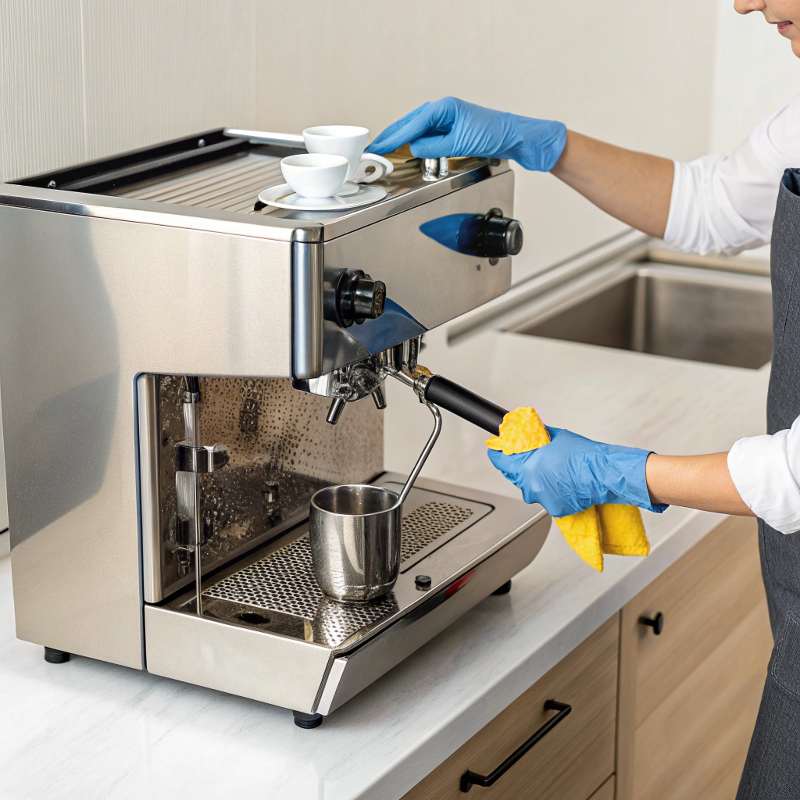
Comprehensive Cleaning Protocols for Commercial Machines
Effective cleaning requires addressing both visible and hidden contamination. Coffee machines have numerous areas where residue can accumulate, from the obvious portafilter basket to less accessible internal components.
Daily Cleaning Requirements[^1]:
- Group Heads: Backflush with specialized detergent to remove coffee oils from solenoid valves and internal passageways
- Portafilters & Baskets: Soak in detergent solution to dissolve embedded oils that can't be removed by rinsing alone
- Steam Wands: Purge and wipe immediately after each use to prevent milk protein from baking onto the surface
- Drip Trays: Empty and clean to prevent bacterial growth and unpleasant odors
Weekly Deep Cleaning[^2]:
- Shower Screens: Remove and scrub to eliminate coffee particle buildup that affects water distribution
- Group Gaskets: Clean thoroughly to ensure proper sealing and prevent leaks during extraction
- Blind Filters: Replace or clean thoroughly to maintain effective backflushing
- Water Tank: Empty, clean, and refill to prevent biofilm development
The consequences of poor hygiene extend beyond taste. Blocked pathways create uneven extraction, leading to inconsistent shots. In commercial settings, this inconsistency directly impacts customer satisfaction and return business. I've consulted with cafes where proper cleaning protocols improved extraction consistency[^3] by 30% and eliminated customer complaints about bitter coffee.
How Do Pressure and Temperature Stability Impact Extraction Results?
Pressure fluctuations and temperature inconsistency create unpredictable extraction results. One shot might be perfectly balanced while the next is sour or bitter, making quality control nearly impossible despite using identical parameters.
Pressure and temperature stability[^4] directly determine extraction quality because these variables control the rate and efficiency of compound extraction from coffee grounds. Even minor fluctuations (±1°C or ±0.5 bar) can dramatically alter flavor profiles, resulting in inconsistent shots despite identical recipes.
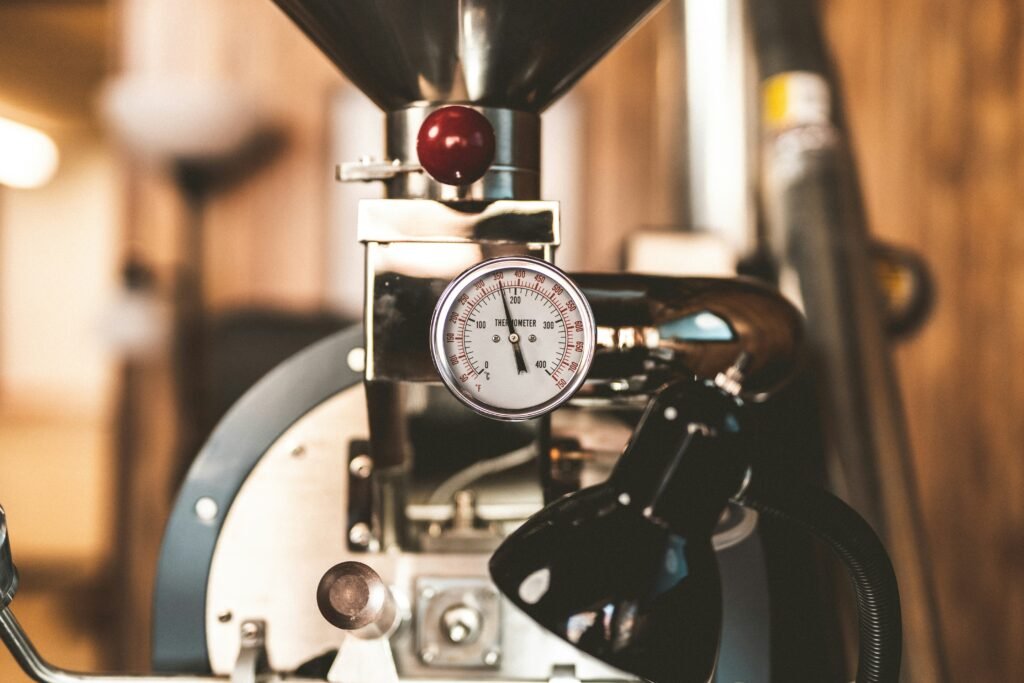
The Science of Extraction Stability
The relationship between pressure, temperature, and extraction is complex but critical to understand. During espresso preparation, these variables must remain within tight tolerances to achieve consistent results.
Temperature Stability Factors:
Temperature affects which compounds are extracted from coffee and at what rate. Higher temperatures extract more bitter compounds, while lower temperatures favor acidity. Professional machines employ several methods to ensure stability:
| Component | Function | Impact on Stability |
|---|---|---|
| PID Controller | Monitors and adjusts heating elements | Maintains temperature within ±0.1°C range |
| Heat Exchangers | Separate brewing water from steam production | Prevents temperature drops during peak usage |
| Pre-heating Systems | Warm water before it reaches the group head | Eliminates temperature loss between boiler and extraction |
| Insulated Components | Reduce heat dissipation | Maintain consistent temperatures throughout the system |
Pressure Stability Considerations:
Pressure affects the resistance coffee grounds encounter during extraction. Modern machines maintain stable pressure through:
- Rotary Pumps: Provide more consistent pressure than vibratory pumps, especially during extended operations
- Pressure Regulators: Compensate for fluctuations in input water pressure
- Pre-infusion Chambers: Allow for controlled pressure ramping at the beginning of extraction
- Pressure Profiling Systems: Enable precise pressure manipulation throughout the extraction process
The financial implications of poor stability extend beyond inconsistent quality. Unstable machines require more adjustments and test shots, increasing both coffee waste and labor costs. One high-volume café I worked with reduced coffee waste by 15% after upgrading to a machine with superior stability features, saving thousands in annual inventory costs.
When Should You Replace Coffee Machine Gaskets and Seals?
Worn gaskets create persistent leaks that damage your equipment, waste water, and create workplace hazards. These seemingly minor components can cause major operational disruptions when they fail at the worst possible moment.
Coffee machine gaskets and seals should be replaced every 6-12 months because they deteriorate from constant exposure to high temperatures, pressure, and chemical cleaning agents. Worn gaskets cause leaks, channeling issues during extraction, and inconsistent brewing pressure that directly compromises coffee quality.
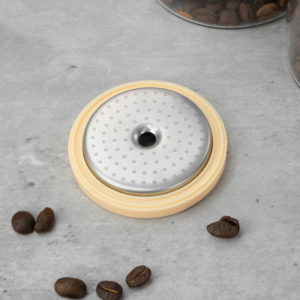
Critical Seals and Their Maintenance Schedule
Not all gaskets deteriorate at the same rate, and understanding their different lifespans can help create an effective maintenance schedule that prevents unexpected failures.
Group Head Gaskets:
These crucial components create the seal between the portafilter and group head. When they deteriorate:
- Water leaks during extraction, reducing effective brewing pressure
- Channeling occurs as water finds the path of least resistance
- Grounds may spray from the sides of the portafilter during brewing
Most commercial machines require group gasket replacement every 6 months with daily operation. However, this can vary based on water hardness, cleaning chemical strength, and machine usage patterns.
Steam Valve Seals:
These high-temperature seals control steam delivery and are subject to extreme conditions:
- Regular exposure to 130°C+ temperatures accelerates deterioration
- Mineral deposits from steam can embed in the gasket material
- Opening and closing cycles create mechanical wear
Steam valve seals typically require replacement every 9-12 months, though visual inspection for steam leakage should guide your maintenance schedule.
O-rings and Internal Seals:
These less accessible components are often overlooked until failure occurs:
- Pump seals can develop slow leaks that damage electronic components
- Boiler access gaskets may fail after multiple maintenance procedures
- Water inlet valves contain multiple seals that control water flow
The cost of preventive gasket replacement is minimal compared to the potential damage from leaks. A single major leak can damage electrical systems, create safety hazards, and result in expensive repairs and downtime. I recommend maintaining a comprehensive gasket inventory and implementing a scheduled replacement program rather than waiting for failure.
Why Does Machine Assembly Quality Matter For Long-term Performance?
Poor machine assembly creates hidden flaws that progressively worsen over time. Improperly seated components, over-tightened fittings, and misaligned parts gradually fail under the stress of daily operation.
Machine assembly quality determines long-term reliability because manufacturing precision affects how components interact under pressure and temperature stress. Poorly assembled machines develop issues like leaking joints, electrical failures, and uneven heating that progressively worsen with use, regardless of maintenance quality.
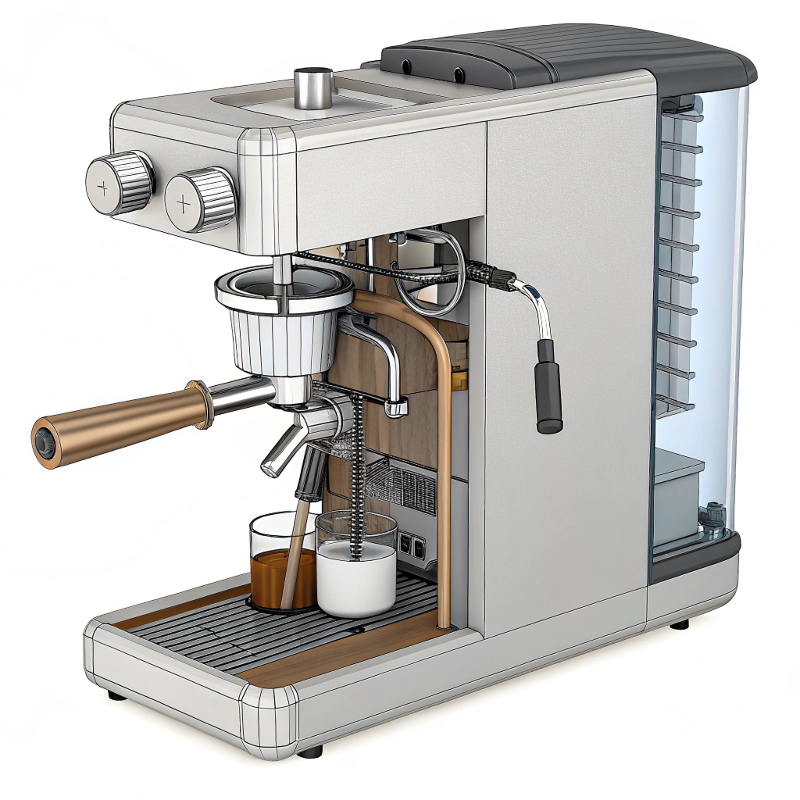
Identifying Quality Construction in Commercial Equipment
The difference between professional-grade and consumer-level construction becomes apparent after months of continuous operation. Commercial machines are designed with serviceability and durability as primary considerations.
Key Quality Indicators:
When evaluating coffee equipment quality, focus on these aspects:
| Component | Quality Indicator | Performance Impact |
|---|---|---|
| Frame Construction | Solid metal frame with minimal flex | Maintains component alignment during thermal expansion |
| Copper Boilers | Thickness and weld quality | Provides thermal stability and corrosion resistance |
| Internal Plumbing | High-temperature fittings and routing | Prevents leaks from vibration and thermal cycling |
| Electrical Systems | Protected wiring harnesses and quality connectors | Reduces risk of shorts and connection failures |
| Group Head Design | Solid brass construction with proper thermal mass | Ensures temperature stability during continuous operation |
Manufacturing Precision:
The precision of component manufacturing directly impacts performance:
- Tolerances: Tighter manufacturing tolerances ensure components fit together precisely
- Material Selection: Higher grade metals resist corrosion and maintain structural integrity
- Assembly Methods: Proper torque specifications prevent over-tightening that causes premature failure
- Quality Control: Rigorous testing before shipping identifies potential issues
The financial case for quality is clear when you consider the total cost of ownership. Premium equipment might cost 30-50% more initially, but offers significantly lower repair costs and longer service life. Many of our clients report that quality commercial equipment remains in service for 10+ years with proper maintenance, while economy models often require replacement within 3-5 years, making the premium option more economical over time.
How Does Grinder Performance Influence Your Coffee Machine's Output?
Inconsistent grinder performance creates extraction problems that no coffee machine can overcome. Uneven particle size distribution leads to channeling, under-extraction, and bitter flavors regardless of machine quality.
Grinder performance directly affects extraction because particle size consistency determines how evenly water flows through the coffee bed. Poor grinders create uneven distribution with too many fines, causing channeling, slow flow rates, and extraction imbalances that produce both sour and bitter notes in the same cup.
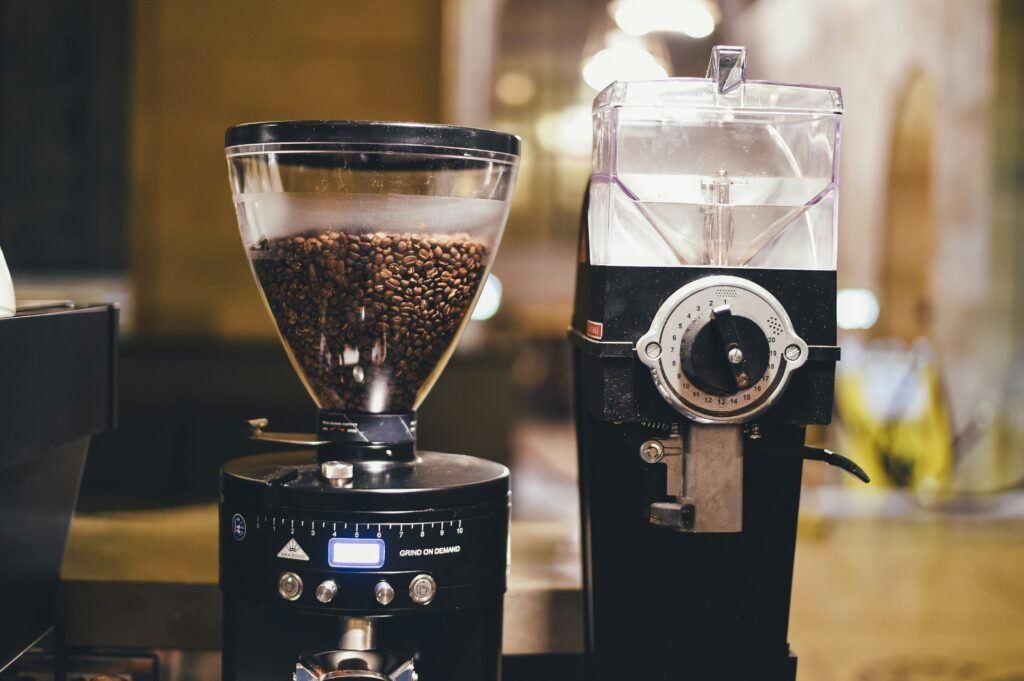
The Intersection of Grinding and Extraction
While technically separate from the espresso machine, the grinder is an integral part of the coffee preparation system. Many extraction issues blamed on machines actually originate with poor grinding.
Critical Grinder Factors:
- Burr Quality: Premium flat or conical burrs produce more consistent particle sizes
- Burr Alignment: Precise alignment ensures even grinding across the entire burr surface
- Motor Power: Sufficient power prevents heating during grinding and maintains consistent RPM
- Heat Management: Effective heat dissipation prevents thermal expansion that changes grind settings
- Adjustability: Fine adjustment capability allows precise dial-in for different coffees
Impact on Extraction Metrics:
The relationship between grind quality and extraction is measurable:
| Grind Quality Issue | Extraction Symptom | Cup Result |
|---|---|---|
| Excessive Fines | Slow flow rate, channeling | Bitter overextraction with sour notes from channeling |
| Inconsistent Particle Size | Uneven extraction | Flat, muddled flavors lacking clarity |
| Heat-affected Grounds | Altered volatile compounds | Diminished aromatics and flavor brightness |
| Static-clumped Distribution | Density variations in puck | Inconsistent shot-to-shot results |
Grinder maintenance is as crucial as machine maintenance. Regular burr inspection, cleaning, and replacement (typically every 500-1000kg of coffee) ensures consistent performance. I've consulted with cafés where simply replacing worn burrs increased extraction consistency by 25% and significantly improved customer satisfaction scores.
What Role Does Proper Descaling Play In Machine Maintenance?
Improper descaling procedures can cause more harm than good. Using the wrong chemicals, incorrect concentrations, or poor technique damages sensitive components while leaving harmful scale deposits intact.
Proper descaling prevents component failure by safely removing mineral deposits that reduce heating efficiency, restrict water flow, and damage valves. The procedure must be tailored to your specific water hardness, machine design, and component materials to effectively remove scale without causing corrosion.
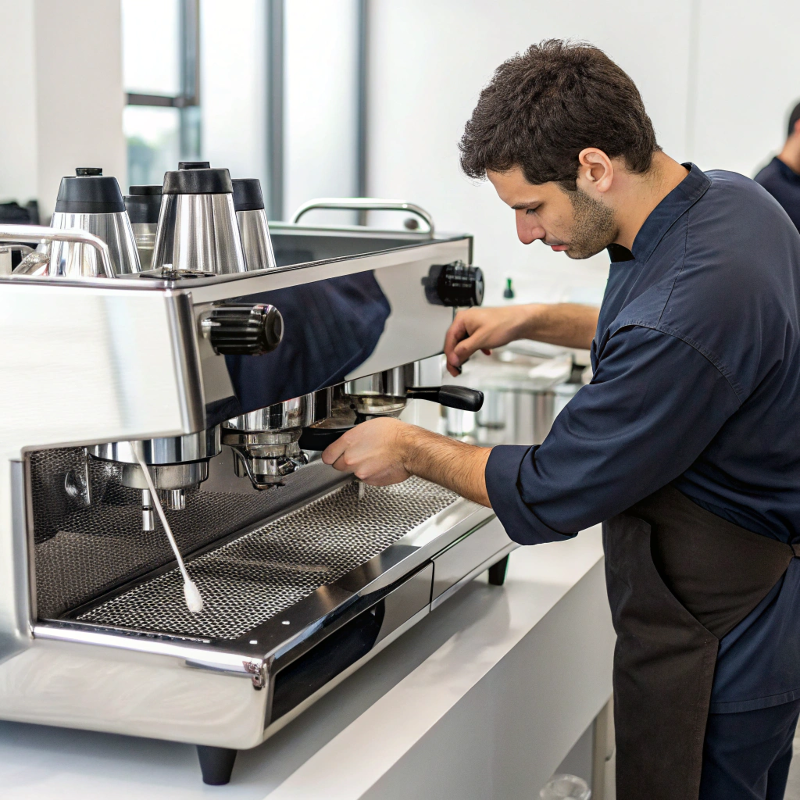
Developing an Effective Descaling Protocol
Descaling is not a one-size-fits-all process. Different machines require different approaches based on their design and materials.
Key Descaling Considerations:
- Water Analysis: Test your water supply to determine mineral content and appropriate descaling frequency
- Chemical Selection: Choose descaling agents compatible with your machine's internal materials
- Concentration Control: Follow manufacturer specifications for solution strength
- Contact Time: Allow sufficient time for scale dissolution without excessive exposure
- Thorough Rinsing: Remove all chemical residue before returning to service
Material Compatibility:
Not all descaling agents are safe for all machines:
| Machine Component | Compatible Descaling Agents | Incompatible Chemicals |
|---|---|---|
| Copper Boilers | Food-grade citric acid, manufacturer-approved descalers | Strong acids, vinegar |
| Stainless Steel Components | Citric acid, lactic acid, phosphoric acid | Chlorine-based cleaners |
| Rubber Seals/Gaskets | Mild acids at recommended concentrations | Concentrated acids, caustic solutions |
| Aluminum Parts | Specialized aluminum-safe descalers | Standard descaling acids |
The consequences of improper descaling can be severe. Too strong a solution can corrode metal surfaces, damage gaskets, and create leaks. Insufficient descaling leaves scale deposits that continue to accumulate. One client discovered that an aggressive descaling approach had damaged their boiler element, requiring a €500 replacement that could have been avoided with proper procedures.
How Can Boiler Maintenance Prevent Costly Breakdowns?
Neglected boilers eventually fail catastrophically. Corrosion, scale buildup, and sediment accumulation gradually degrade performance until complete failure occurs—often during peak business hours when the financial impact is greatest.
Regular boiler maintenance prevents failures by addressing scale buildup, inspecting heating elements, testing safety valves, and checking for corrosion. Preventive maintenance allows early detection of developing issues before they cause complete system failure or safety hazards.
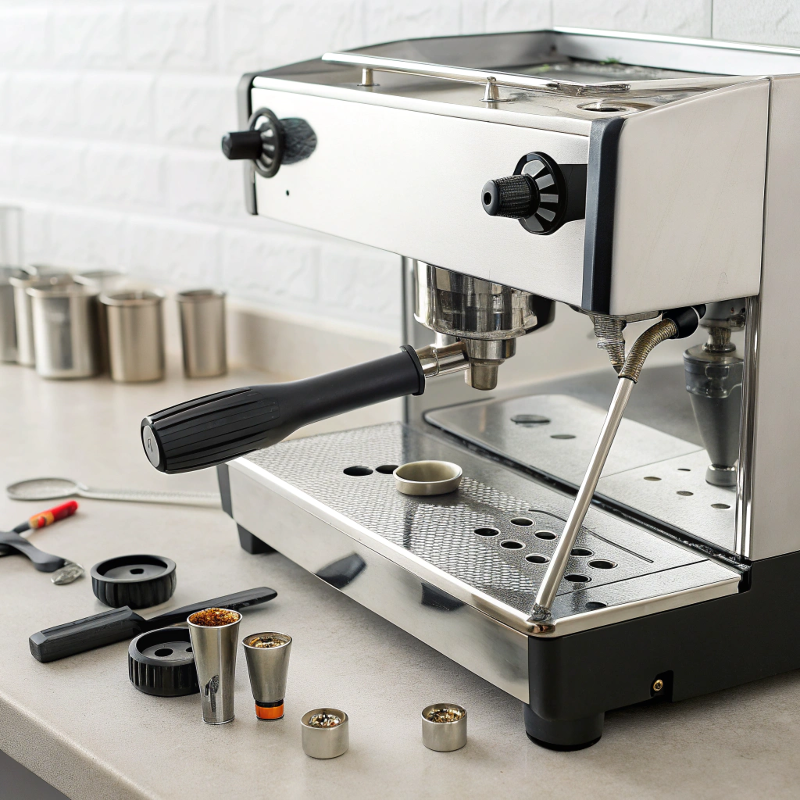
Comprehensive Boiler Care Strategies
The boiler is the heart of your espresso machine, responsible for both temperature and pressure generation. Its maintenance requires special attention.
Essential Boiler Maintenance Tasks:
- Heating Element Inspection: Check for scale buildup and corrosion that can cause element failure
- Safety Valve Testing: Ensure pressure relief valves function properly to prevent dangerous pressure buildup
- Water Level Probes: Clean and test probe functionality to maintain proper water levels
- Pressure Gauge Verification: Confirm accurate pressure readings with calibrated testing equipment
- Internal Surface Inspection: Look for corrosion, pitting, or other damage that could compromise boiler integrity
Preventive Replacement Schedule:
Certain boiler components have predictable lifespans and should be replaced before failure:
| Component | Typical Lifespan | Warning Signs | Consequence of Failure |
|---|---|---|---|
| Heating Elements | 3-5 years | Longer heating times, uneven heating | No hot water, inability to maintain temperature |
| Pressure Stat | 2-3 years | Erratic pressure readings, hunting behavior | Inconsistent brewing pressure, safety risks |
| Safety Valve | 3-4 years | Mineral buildup, sticking | Dangerous pressure levels, regulatory violations |
| Vacuum Breaker | 2-3 years | Steam leaks, improper venting | Air binding, heating inefficiency |
The investment in professional boiler maintenance pays dividends in reliability and safety. One restaurant client implemented a quarterly boiler maintenance program that identified a failing heating element before it completely failed, allowing scheduled replacement during off-hours rather than emergency service that would have resulted in lost business during their busiest day.
Why Is Electrical System Stability Essential For Modern Coffee Machines?
Electrical instability creates mysterious performance issues that are difficult to diagnose. Voltage fluctuations, poor grounding, and faulty connections cause intermittent problems that frustrate both technicians and operators.
Electrical system stability is crucial because modern coffee machines rely on sensitive electronic components for temperature control, timing, and pressure regulation. Voltage fluctuations, improper grounding, and poor power quality can damage circuit boards, cause erratic behavior, and lead to premature component failure.
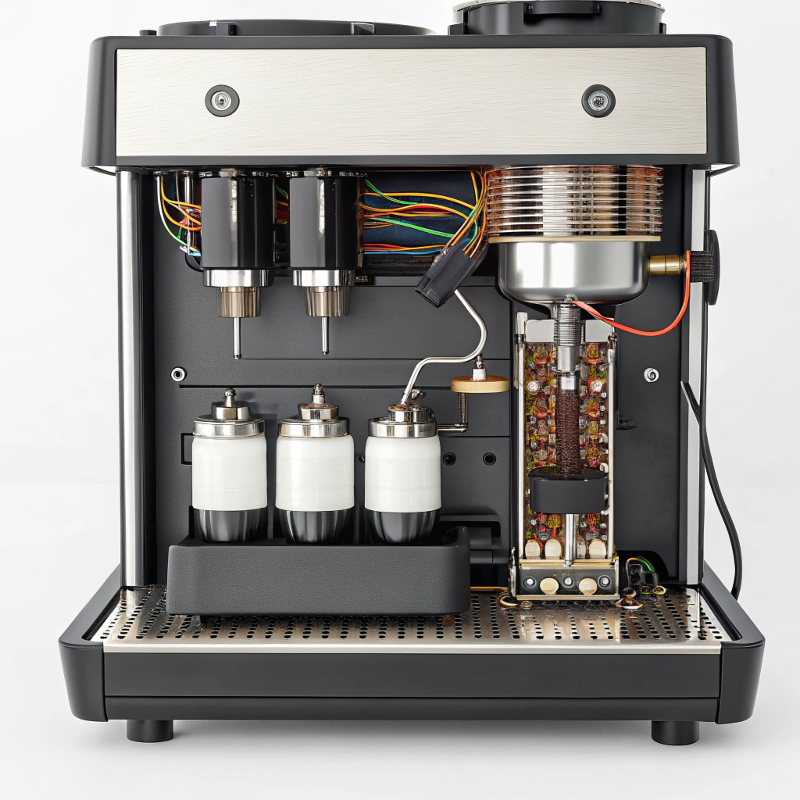
Protecting Your Investment Through Power Management
Modern espresso machines contain sophisticated electronics that require clean, stable power to function correctly and maintain their expected lifespan.
Power Quality Issues and Solutions:
- Voltage Fluctuations: Install voltage regulators to maintain consistent input power
- Power Surges: Use surge protectors designed for commercial equipment
- Grounding Problems: Ensure proper equipment grounding to prevent electrical noise
- Circuit Capacity: Dedicate appropriate electrical circuits for high-draw equipment
- Harmonics: Install filters to clean power in environments with variable frequency drives
Component Vulnerability:
Different electrical components have varying sensitivity to power issues:
| Component | Vulnerability | Protection Strategy |
|---|---|---|
| Control Boards | Highly sensitive to surges and noise | Dedicated surge protection, clean power supply |
| Solenoid Valves | Affected by voltage drops | Voltage regulation, proper wire sizing |
| Pump Motors | Damaged by frequent cycling during brownouts | Power conditioning, motor protection circuits |
| Heating Elements | Shortened lifespan from voltage fluctuations | Voltage regulation, proper circuit sizing |
The financial impact of electrical problems extends beyond repair costs. Inconsistent machine behavior causes product waste, reduces productivity, and creates customer satisfaction issues. One café I consulted with was experiencing random machine shutdowns that were traced to an overloaded circuit shared with refrigeration equipment. Moving the espresso machine to a dedicated circuit completely eliminated the problem and the associated lost revenue from downtime.
How Do Environmental Factors Impact Your Coffee Equipment?
Hostile environmental conditions accelerate equipment deterioration. Excessive humidity, temperature extremes, and dust contamination create maintenance challenges that significantly reduce machine lifespan.
Environmental factors like humidity, temperature fluctuations, and air quality directly affect coffee machine performance. High humidity promotes corrosion and electrical problems, while temperature extremes stress components and affect calibration. Dust and airborne contaminants can infiltrate electronic systems and obstruct cooling vents.
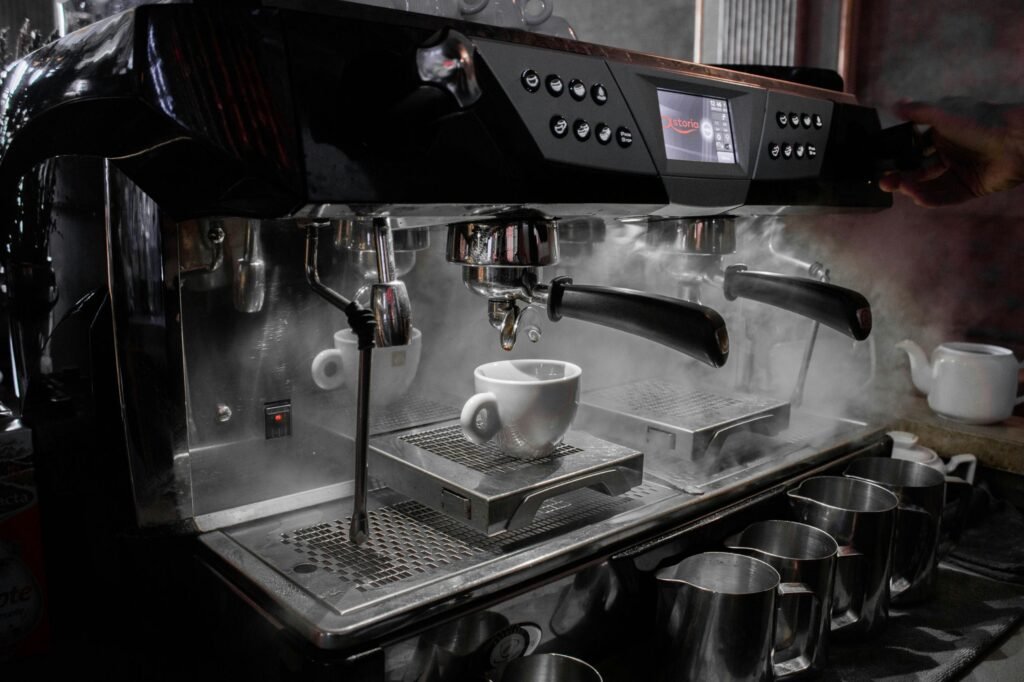
Creating Optimal Conditions for Equipment Longevity
The environment surrounding your coffee equipment plays a surprisingly important role in its performance and lifespan. Controlling these factors can significantly reduce maintenance issues.
Critical Environmental Considerations:
- Ambient Temperature: Keep equipment areas between 20-25°C for optimal operation
- Humidity Control: Maintain 40-60% relative humidity to prevent corrosion and electrical issues
- Air Quality: Filter dust and grease from air in kitchen environments
- Ventilation: Ensure adequate airflow around machines to prevent heat buildup
- Water Supply Stability: Protect equipment from water pressure fluctuations with regulators
Location-Specific Challenges:
Different operating environments present unique challenges:
| Environment | Specific Challenges | Mitigation Strategies |
|---|---|---|
| Coastal Areas | Salt air accelerates corrosion | Enhanced preventive maintenance, corrosion-resistant components |
| High Humidity Regions | Condensation on electronic components | Dehumidification, scheduled drying procedures |
| Dusty Environments | Clogged cooling vents, contaminated electronics | Enhanced filtration, more frequent cleaning |
| Temperature Extremes | Component stress, calibration drift | Climate control, thermal insulation |
The placement of your equipment within your facility also matters. I've seen dramatic differences in maintenance requirements between identical machines placed in different locations within the same business. One restaurant reduced their service calls by 40% simply by relocating their espresso machine away from their dishwashing station, which had been exposing it to excessive steam and humidity.
Conclusion
Maintaining optimal coffee machine performance requires attention to water quality, regular cleaning, component integrity, and proper environmental conditions. By understanding these key factors, you can significantly extend equipment lifespan, ensure consistent quality, and protect your investment.
---
[^1]: Understanding daily cleaning requirements is crucial for maintaining machine performance and ensuring high-quality coffee.
[^2]: Exploring weekly deep cleaning methods can help prevent buildup and ensure optimal machine functionality.
[^3]: Discovering factors that influence extraction consistency can lead to better coffee quality and customer satisfaction.
[^4]: Learning about pressure and temperature stability can enhance your coffee brewing techniques and improve flavor consistency.



